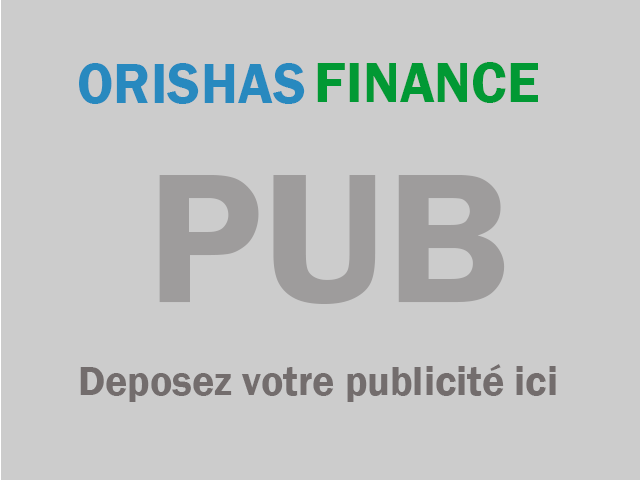 Les actualités de la BRVM en Flux RSS
Les actualités de la BRVM en Flux RSS
Nous agrégeons les sources d’informations financières spécifiques Régionales et Internationales. Info Générale, Economique, Marchés Forex-Comodities- Actions-Obligataires-Taux, Vieille règlementaire etc.
Profitez d'une expérience simplifiée
Retrouvez toute l'information économique et financière sur notre application Orishas Direct à Télécharger sur Play StoreC'est l'un des plus gros scandales de blanchiment d'argent de ces dernières années, qui éclabousse
Danske Bank et plusieurs établissements scandinaves. Tout a démarré en 2007 : cette année-là, la banque
danoise rachète la finlandaise Sampo Bank, possédant une succursale à Tallinn, en Estonie. La même
année, les autorités estoniennes relèvent des irrégularités dans les activités de Sampo, et la Banque centrale
russe informe les régulateurs danois que des clients non résidents participent à des transactions destinées à
éviter l'impôt et à blanchir « plusieurs milliards de roubles par mois ». Le principal canal d'évasion fiscale était
le portefeuille de clients non résidents, soit 10000 comptes. Après en avoir examiné plusieurs milliers, les
régulateurs ont conclu que la « très grande majorité » étaient suspects. Pourtant, la succursale n'a signalé
pour activités suspectes que 760 clients auprès du régulateur estonien.
Danske Bank reconnaît n'avoir pas fait tout le nécessaire pour empêcher les abus. En décembre 2013,
Howard Wilkinson, son ex-responsable des opérations de trading dans la Baltique, a alerté
Finantsinspektsioon, le régulateur estonien. Les bureaux de Danske ont été perquisitionnés en 2014. « Nous
avons découvert que les mécanismes de contrôle du risque ne fonctionnaient pas et que les procédures
n'étaient pas appliquées », rappelle Kilvar Kessler, responsable de Finantsinspektsioon.
En 2015, Danske, sous la pression de l'équipe de Kessler, a clôturé son portefeuille de clients non résidents.
L'enquête a révélé que 200 milliards d'euros ont transité entre 2007 et 2015, dont 23% venus de Russie. « Il
est probable qu'une grande partie des transferts étaient suspects », ont conclu les enquêteurs.
Danske a aussi récemment décidé de fermer sa succursale estonienne et de se retirer de Lettonie, Lituanie
et Russie.
Le scandale touche toute l'Europe du nord. Plusieurs dizaines de milliards de fonds illicites auraient transité
par la succursale estonienne de Swedbank, plus ancienne banque suédoise. Sa directrice générale Brigitte
Bonnesen a été congédiée en mars dernier. Et en septembre, Swedbank a reconnu des manquements dans
son contrôle et admis qu'elle rencontrait toujours des problèmes d'identification de ses clients en Estonie et
en Suède. Elle a demandé au cabinet Clifford Chance d'ouvrir une enquête.
Juge américain Selon l'investisseur Bill Browder, la banque finlandaise Nordea, également soupçonnée de
blanchiment, tente de faire obstruction aux investigations. Les autorités finlandaises et suédoises ont refusé
d'ouvrir des enquêtes qui auraient permis de tracer plus facilement l'argent. En mai, Bill Browder a convaincu
un juge américain d'assigner les deux banques au sujet de leurs transactions en dollars. Son équipe épluche
actuellement leurs comptes. Ces affaires pourraient durablement ébranler le système bancaire scandinave,
les investisseurs craignant que les enquêtes ne débouchent sur d'importantes amendes. Le gouvernement
estonien envisage d'alourdir la pénalité maximale sanctionnant le blanchiment d'argent (400 000 euros
aujourd'hui) pour adopter la norme européenne, jusqu'à 10% du chiffre d'affaires annuel. Le responsable du
régulateur danois, Jesper Berg, et son homologue estonien, Kilvar Kessler, ont renforcé leurs équipes
anti-blanchiment. Après le scandale Danske, difficile de s'opposer à un durcissement de la lutte contre les
délits financiers.
COÛTEUX DÉRAPAGE 200 milliards d'euros de transferts suspects. 10 000 comptes de non résidents
litigieux. 5 millions d'euros d'amende minimum prévus par l'Estonie pour blanchiment et jusqu'à 10% du
chiffre d'affaires.
Vous devez être membre pour ajouter un commentaire.
Vous êtes déjà membre ?
Connectez-vous
Pas encore membre ?
Devenez membre gratuitement
04/12/2025 - Taux
19/11/2025 - Secteurs Taux
06/10/2025 - Taux
19/09/2025 - Taux
28/08/2025 - Taux
13/08/2025 - Taux
22/07/2025 - Taux
22/07/2025 - Taux

04/12/2025 - Taux

19/11/2025 - Secteurs Taux

06/10/2025 - Taux
